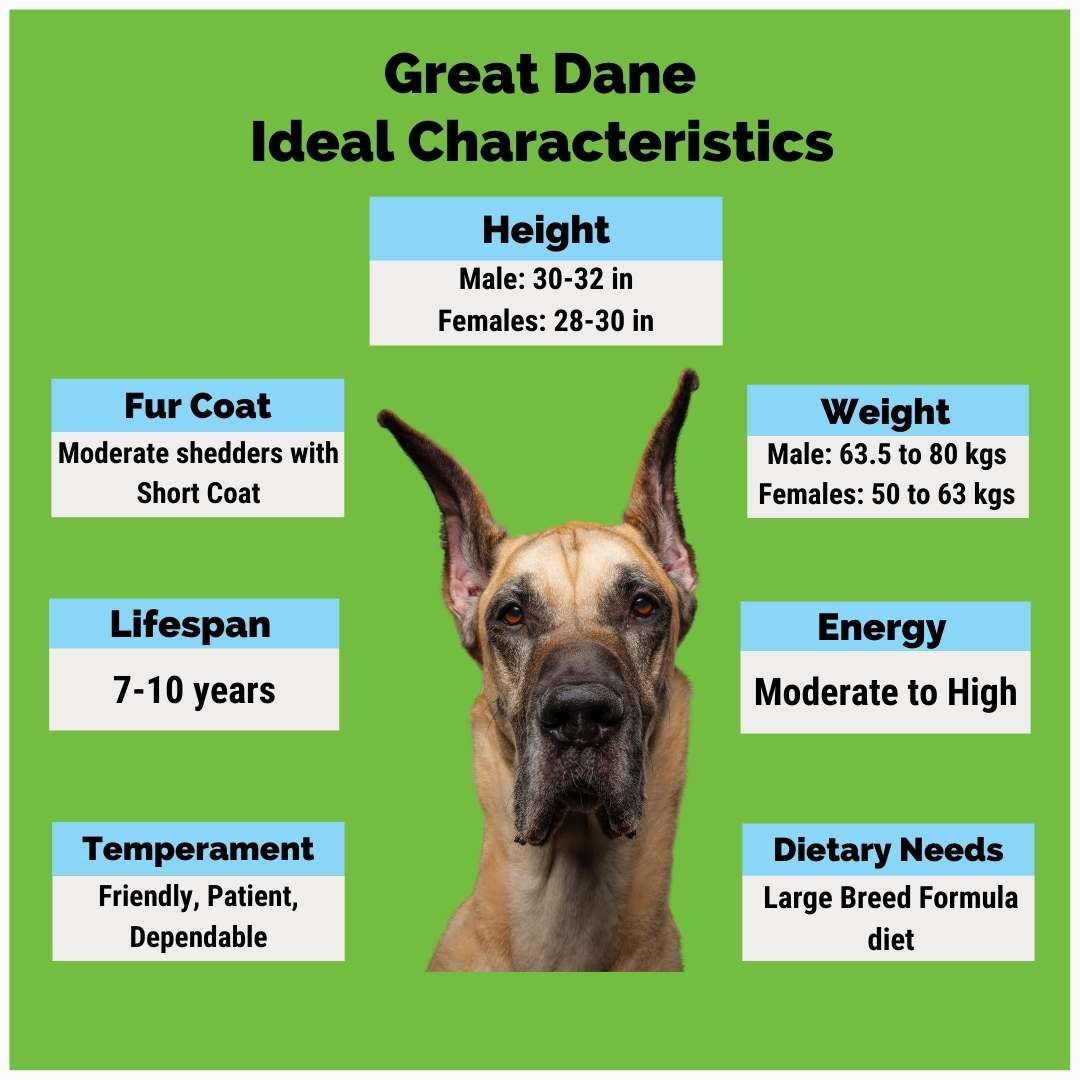The History of Great Dane
The Great Dane, also known as the German Mastiff or Deutsche Dogge, is a large German domestic dog known for its big size. The Great Dane descends from hunting dogs known from the Middle Ages and is one of the largest breeds in the world.
Once upon a time, German nobles used Danes to hunt ferocious wild boars, bears, and deer at princely courts. Later, Danes became famous as protectors of their homes and loved ones, something they are still happy to perform. Patient with kids, Great Danes are people pleasers who tend to make friends easily.
The earliest written description of a dog resembling the Great Dane may be found in Chinese literature of 1121 BC, according to an article by Dr. G. Ciaburri in a Great Dance club of Italy publication (1929).
Despite being called the Great Dane, these dogs have ties to Germany, not Denmark. Some believe the name came about when French naturalist Georges-Louis Leclerc, Comte de Buffon happened upon the breed while traveling in Denmark in the early 1700s and saw a version of the Boar Hound who was slimmer and more like a Greyhound in appearance. He called the large dog "le Grande Danois", which eventually became great Danish dog or Great Dane, and the name just stuck.

Ideal Characteristics
Height
Male: 30-32 in
Females: 28-30 in
Weight
Male: 63.5 to 80 kgs
Females: 50 to 63 kgs
Life Span
7-10 Years
Fur Coat
Moderate shedders with Short Coat
Temperament
Friendly, Patient, Dependable
Energy Levels
Moderate to High
Dietary Needs
Large Breed Formula diet


.jpg)
.png)

.jpg)

.jpg)
.png)


Post a comment